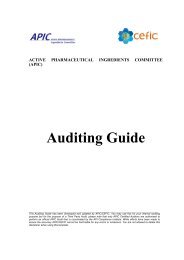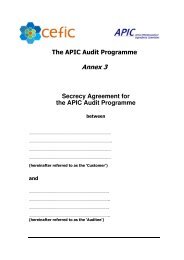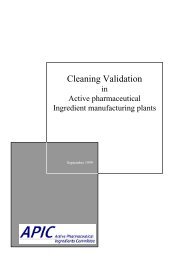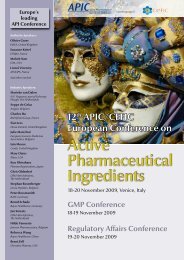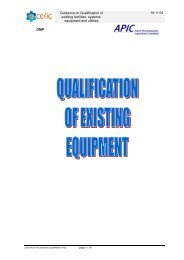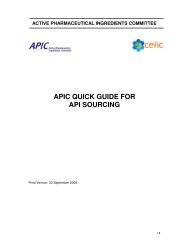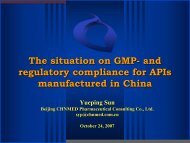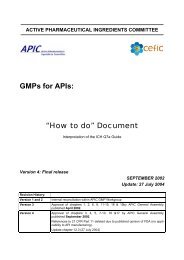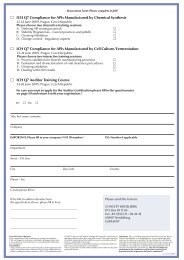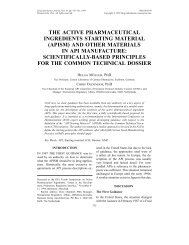Quality Management System for Active pharmaceutical
Quality Management System for Active pharmaceutical
Quality Management System for Active pharmaceutical
Create successful ePaper yourself
Turn your PDF publications into a flip-book with our unique Google optimized e-Paper software.
<strong>Quality</strong> <strong>Management</strong> <strong>System</strong> - integrating GMP into ISOAnnex C: ValidationPrincipleThe August 1996 edition of the CEFIC/EFPIA Guidelines on Good Manufacturing Practices<strong>for</strong> <strong>Active</strong> Ingredients Manufacturers defines validation as the action of proving anddocumenting that any procedure, process, equipment, activity or system will, with a highdegree of assurance, lead to expected results.Validation is inherently relevant to many of the chapters of this document, and particularly tochapter 4 (Design and Development Control), chapter 9 (Manufacturing Process Control) andchapter 10 (Inspection and Testing). Because the concept and practice of validation is of suchpredominant importance to the API industry, it is considered in more detail in this Annex.C.1 Identification of need <strong>for</strong> validationC.1.1While all processes used in the production of API should be well controlled, qualitycritical steps which have a direct impact on the quality of the API, particularly fromthe final intermediate onward, should be validated.C.1.2The development and introduction of new quality critical activities such asmanufacturing processes, equipment, analytical methods, etc. should activate thevalidation process.C.1.3Changes to existing quality critical activities should only be introduced oncevalidation is completed, documented and approved.C.2 Chronological aspects of validationC.2.1Retrospective validation should review and analyse on the basis of historicalevidence in the <strong>for</strong>m of accumulated production, testing, and control data.C.2.2Concurrent validation should generate the necessary evidence during actualimplementation. During this phase, batches of product will be released on the basisof more extensive testing than when the validation programme is fully completed.C.2.3Prospective validation should apply to all relevant new or modified processes, andshould commence during the development stage. It is usually the result of a riskanalysis per<strong>for</strong>med on the proposed new or modified production process.58



